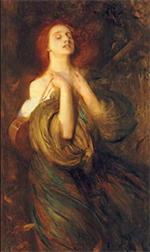
A Question of Characterization
We are always doing each other injustice, and thinking better or
worse of each other
than we deserve, because we only hear
and see separate words and actions" (159).
Points
for Reflection
G. Eliot's "Mr. Gilfil's Love Story" (1857, 1858), chp. 9 - Epilogue, Scenes of Clerical Life
- is the nature of Mr. Gilfil’s affection for Caterina (“Tina”) more romantic than it is pitying?
- this tale overflows with gestures of “pity” enacted by the narrator and characters alike. Choose two different agents of pity (the narrator could be one, if you wish), and compare and contrast the types of pity most commonly enacted by these two individuals. Possible types of pity might include affectionate and equalizing pity, sarcastic or mocking pity, and condescending pity that resembles kindness but keeps the object of pity at a distance.
- do any of these characters mature significantly over the course of the short story?
- the narrator joins a number of the tale’s male characters in casting Caterina as a small animal, usually a bird. Does the narrator implicitly criticize this practice by directing censure at those who use such metaphors, or does s/he appear to playfully condone such diminutive terms of endearment?
- during an extended flashback, the narrator noted that Caterina’s incomplete education should not disqualify her as a heroine (99). Is her fate more a function of factors outside her control (educational, personal, environmental) than a product of her own choices, and does your conclusion make her more sympathetic as a heroine, or less so?
- while describing the origins of Caterina’s and Captain Anthony Wybrow’s relationship, the narrator attempts to anticipate and deflect the reader’s criticism of Anthony with reflections that Sir Christopher’s nephew is neither a libertine nor a man inclined to strong affections—Nature has not, we are told, “endowed him with [the] capability” to love (103). Does the story bear out the narrator’s sympathy towards, and initial defense, of Anthony?
- Anthony sees himself as a selfless victim overly stressed by others, one who cannot do anything to please himself. His very marriage, he concludes, is a product of Sir Christopher’s will (125). Does the narrative convince us to take Anthony’s perspective concerning himself seriously?
- is Captain Anthony Wybrow the calm, cool, and collected young man he appears to be?
- is this tale aptly titled, or should it recommend some character other than Mr. Gilfil?
- why does Mr. Gilfil love Caterina, and does George Eliot intend the reader to view his affection as ideal?
- what posture towards Christianity does the book adopt? Is the tenuous nature of George Eliot’s relationship with orthodox belief and traditional church practice quite evident in this book, hidden, or transformed?
- Eliot’s narrator closes Mr. Gilfil’s tale by noting that he is but a “whimsical misshapen trunk," that, though originally “sketched out by nature as a noble tree,” he has not become the man he was meant to be (166). Is the narrator criticizing Mr. Gilfil’s moral character?

Autumn (1907)
Arthur Hacker
Dr. Paul Marchbanks
pmarchba@calpoly.edu
![]()
